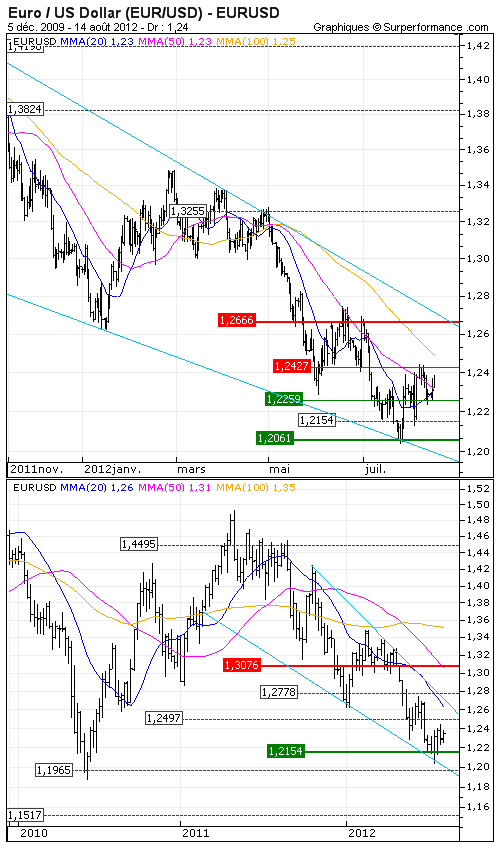Euro / US Dollar (EUR/USD) : Gloomy outlook for the global economy
By Mathieu Burbau
A few weeks after the European monetary authority cut its main rate by a quarter point to historically low level of 0.75%, Mario Draghi had caused a brief euphoria in the markets, indicating that the institution was ready to "do whatever it takes to preserve the euro". But investor hopes were dampened at his monthly press conference that followed because no concrete action has confirmed the promise of the Italian economist. Even if the ECB does not exclude new purchases of bonds through the EFSF, it will only be the case if countries in difficulty ask for help. Nowadays, they are reluctant to ask for it, even though tensions persist in the bond market.
It is the same story across the Atlantic where the Fed cultivates the status quo despite the many allusions of its chairman Ben Bernanke for a third quantitative easing in order to counter weak U.S. data and the slightly increasing unemployment rate.
Finally, the Chinese macroeconomics also contains risk appetite this summer after the announcement of consumption and inflation decline.
Graphically, in weekly data, the price parity evolves almost exclusively under its 20-week moving average for the past a year and the fundamentals do not definitively argue in favor of consolidation. If the technical rebound that began in late July could lead the security to USD 1.25, the decline should continue toward USD 1.1965 then USD 1.1517.




